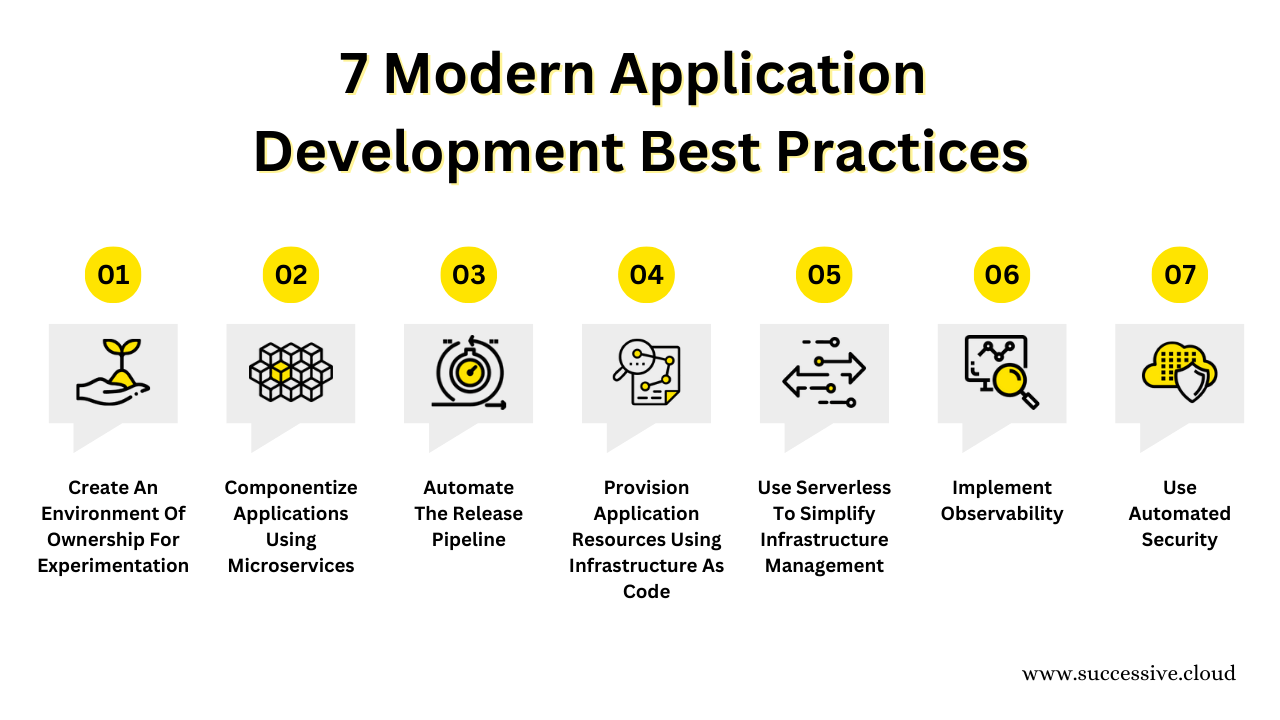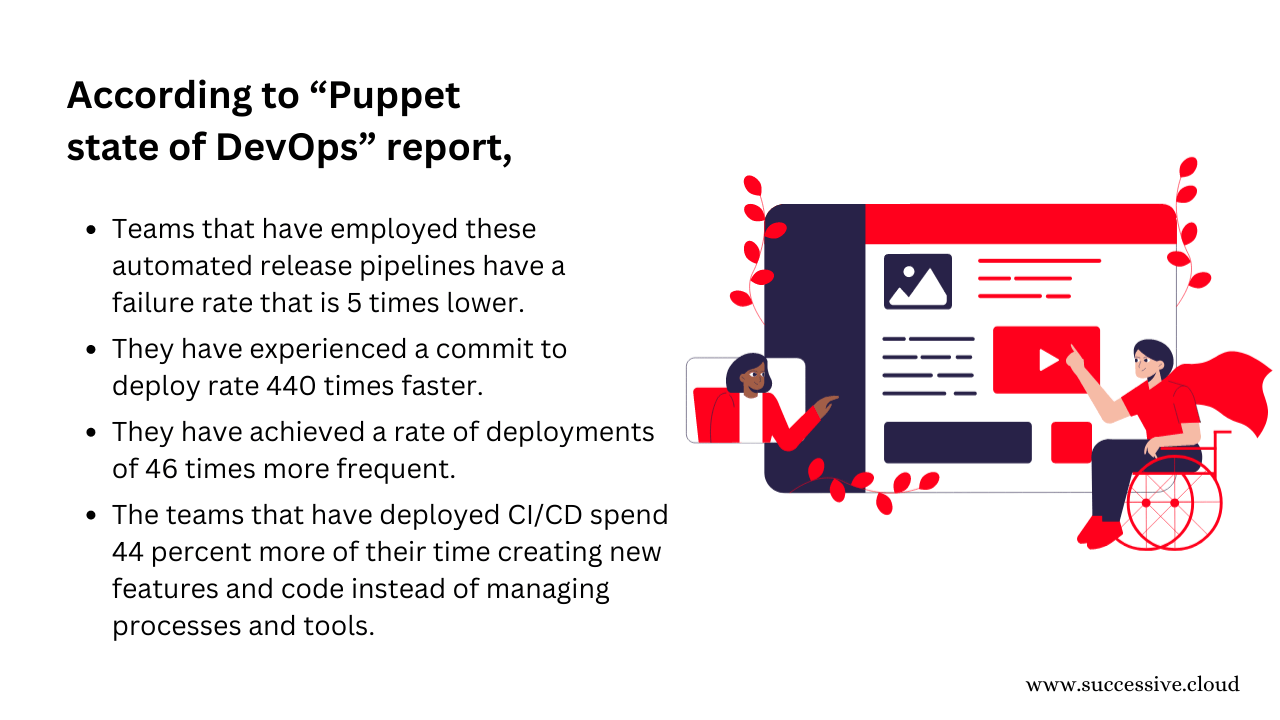When a deadly pandemic hit the whole world in 2020, what every company wished at the time was to be backed up by modern applications. Every business wanted to be accessible and available with better user experience and performance. Many companies achieved that too, but at the cost of stress and frustrations which were faced by DevOps, architects, and developers in developing the application and making it available 24×7 to respond to customers’ changing requirements.
While the whole world jumped on OTT platforms, shopped online without human assistance, spend all the day building promising Linkedin profiles, and connected on video calls during and beyond the lockdown, what went behind the scenes was developers, architects, and DevOps faced intense pressure of spinning up additional compute infrastructure quickly to meet unexpected demand. They struggled to collaborate as distributed teams and to put the right assets in place after suffering failure or outage of applications or services. They were held back from legacy application architecture and hence faced stress and hassle to work with outdated systems.
Though many companies have evolved their modern application development processes with the container, distributed computing, APIs, CI/CD, and architectural considerations for using the cloud, but need a strong foundation to validate against. Therefore, in this blog post, we will try to define modern applications to help developers, architects, and DevOps use it as a benchmark as they design and deploy applications for any industry or domain. In a later section, we will talk about the pillars of modern apps, principles of modern apps, business benefits of modern apps, best practices for developing modern applications, and an ideal architecture that should be adhered to for creating a modern application. Let’s begin.
What Is Modern Application Development?
Many people have tried to give definitions to modern apps already, but as its term is broad enough to mean different things to different people, we would like to define it in our own way. Modern applications are the applications that support rapid innovation. When we say rapid innovation, we mean here, your applications are designed and developed to absorb new code constantly, and new infrastructure could spin up or down in real-time to satisfy customers’ needs, including end users, app developers, DevOps teams, and security teams. You can understand real-time as less or equal to five minutes since the spin‑up time of most cloud instances and their component workloads are roughly five minutes or less. Hence, we can say modern applications are designed and developed to support cycles of rapid innovation. The approach is needed to increase the agility of teams and the reliability, security, and scalability of the applications. In other words, you need to develop cloud-native applications that comprise distributed architecture, modern tools, and automated processes to support rapid business growth.
What Are Modern Application Development Best Practices?
Modern application development enables competitive differentiation for companies by providing them with a powerful approach to designing, developing, and managing software in cloud platforms. Whether it is hybrid or multi-cloud, the new development approach increases the agility of your development and operation teams and the reliability and security of the applications, allowing you to build and release better products faster. You can also adopt the best practices to develop modern applications which are also discussed and shared by top cloud providers. Let’s have a look at them and understand their significance in modern application development.

1. Create An Environment Of Ownership For Experimentation
These are people that ultimately reside at the core of innovation. Therefore, enabling your people to deliver a better customer experience is where modern app development begins. To foster innovation, you need to foster an environment of ownership for experimentation where teams work on products, not projects. It means the team that is building products is accountable for all end-to-end product requirements, not just a piece of it. The approach enables dedicated teams to take ownership of customer requirements, consider customer input, plan the roadmap, and develop and operate applications that generate new customer outcomes. Facilitating an environment in which experimentation thrives and where teams spend more time building business logic abstracts away all the hassle in responding to rapid innovation quickly as your team understands the customer demands proactively.
2. Componentize Applications Using Microservices
Many startups have evolved with microservices architecture, and many enterprises have begun adopting it, either developing new apps as microservices or rebuilding legacy apps into microservices solutions. But why would a business need microservices architecture? Microservices help set a strong culture of ownership and help scale up as and when you want. Microservices architecture is about neatly dividing complex applications into components on which a single team works and takes ownership of it. The application runs independently, changes are pushed in minutes than hours or days unlike monolith time, applications have their fully decentralized datastore, no top-down anything. Without making any dramatic impact on the app, any change can be updated quickly. For a fast-growth company trying to innovate and compete, the microservices architecture allows you to experiment with new ideas more frequently and with a lower risk.
3. Automate The Release Pipeline
With a microservices architecture, your development team got more stuff to release faster which is a great thing. But you won’t be able to get the new features to your customers if your release cycle doesn’t support them. Traditional release pipelines hinder rapid innovation mainly due to manual processes. Manual steps throughout the release process, including code changes, build requests, testing, and deployment, are the greatest drag on achieving the velocity. To get the new features faster to your customers, you need a way to automate different steps of your release pipeline. Here comes automation that helps you create repeatable motion to speed up the flywheel. It is called CI/CD, which allows teams to produce high-quality code faster and more often. Many companies have CI/CD pipelines that are operated with manual processes and non-scalable tools. In such cases, what’s an ideal solution is to modernize CI/CD pipelines with automated tools such as Jenkins, Git, GitHub, etc., and support modern app development needs.

4. Provision Application Resources Using Infrastructure As Code
When your application architecture is modular, and you’re releasing things really faster, there are a lot of moving parts—and they’re moving really quickly. When you make changes to your environment manually, it’s easy to introduce errors that break your application. Additionally, scaling your infrastructure seamlessly as your application grows can be difficult. To keep all of your resources working as expected, you need a consistent environment that you can easily scale or modify based on application needs. You can address this challenge with the help of infrastructure as code. You may programmatically provide and modify your resources with infrastructure as code. It acts as your single source of truth. Using IaC, your infrastructure requirements, like servers, firewalls, routers, load balancers, identity permissions, monitoring alerts, and other things, are modeled and deployed with code. IaC allows you to provision your resources in a safe and repeatable manner. It helps you reduce the error rate and dramatically speed up the process of deploying infrastructure.
5. Use Serverless To Simplify Infrastructure Management
When you begin modern application development, you technically adopt to a new architectural patterns and software delivery processes. For this reason, you require to adopt to an operational model that allows you to offload any activity that is not a core competency of your business. To gain agility that can enable rapid innovation, it is best to build your microservices architecture with serverless technologies wherever possible.
Serverless saves your time and money spent on building and running applications. It eliminates the need to provision and manage servers as it becomes your cloud provider’s responsibility. Henceforth, it keeps you free from server management, provides scaling, and automates high availability. Serverless technologies are best for companies that wish to innovate quickly as it eliminates the need to think about and manage underlying detail and allows them to focus on building applications that deliver customer value. Serverless is a completely automated solution to managing servers, hence differentiating your business and allowing you to speed up your innovation flywheel.
6. Implement Observability
Modern application require far better visibility into the system and monitoring capabilities. With modern apps comes microservices which add complexity when you need to perform monitoring in production since it will require to monitor many things and those could have dependencies on each other. Since microservices folows distributed architecture, hence these can be lived in places. Additionally, your microservices can be running on ephemeral “servers” some of which only run for a few secons. It made tough to get an accurate, real-time view of your application.
What you need is a single pane of truth now to understand what is going on in the system. That means you need as much data as possible and monitoring the small things, from logs to application metrics and traces, that provide more visibility into the health of your services and applications to solve problems faster. All these are possible by implementing observability metrics.
Full observability helps you monitor the small things and use aggregation to see the bigger picture—monitor the microservices to monitor the application. Observability enables you to view the system in a holistic way. It provides you with a unified view of your resources—and you can get that view in real time—you can rapidly respond to application and customer issues to improve overall performance.
7. Use Automated Security
Though it is listed last, make no mistake, as application security is the number one best practice. Security and compliance should be embedded into every stage of the SDLC and in every component of the app itself. But why would you need automated security? When you shift to a microservices architectural pattern, it improves the security of your apps by providing fine-grained control over the security policies of each individual microservice. However, it also introduces challenges because of the increased surface area that you need to protect. Automated security here helps you do it and ensures that security features are operated as intended and hence should be shipped into the cloud helps keep applications secure while slowing down the development cycle.
Following the above seven best practices help you change your architectural pattern, operational model, and software delivery process while allowing you to shift your resources from standard operations to differentiating activities. Now, let’s see the benefits of developing an application with these best practices.
Business Advantages Of Modern Application Development
Every company wants to deliver applications or features faster and users expect nearly 100% uptime on any service or application they wish to access and use. An application developed and deployed through modern application development best practices provides the same value to a business. Let’s see how?
1. Accelerated Time To Market
To develop a modern application, you can use low-code solutions to build the front ends. With event-driven programming, you can add custom logic on the server side. As the applications are built using cloud-native architectures, it is easy to infuse AI into the apps, improving workload portability without compromising scalability and resilience.
2. Remote Development
Another benefit of developing modern applications is you can allow remote development easily. With a cloud-hosted development environment, you can allow your developers or DevOps to get up and running on any project in minutes with a fully configured and secure setup. Your team will easily collaborate in real-time for code reviews and pair programming. You can implement well-governed identity and access management and automate code-to-code workflows to achieve better performance.
3. Better reliability and security
Cloud plays a crucial role in modern app development; henceforth, the development team leverages all the benefits of cloud-based application development, including managed services. For example, your team can focus on building custom quality and performance at scale using fully managed databases. It is so because the managed databases come with built-in high availability, single-digit millisecond latency, and real-time backup. It saves significant time and effort for the development team, and they can focus on integrating data security and protection in their applications.
4. Security and compliance
Cloud providers offer security-specific tools and features across network security, configuration management, access control, and data encryption. You can search through the policies based on regulatory requirements with industry best practices and enforce them across the application stack layers. You can also leverage DevSecOps to keep the application secure. Besides that, You can implement privileged access and management to get control over who can perform certain tasks. Cloud policies and tools also enable you to detect and diagnose security events.
5. Availability
Modern applications are developed and deployed for high availability. These are designed with self-healing capabilities that allow them to be fault tolerant and responsive to changes in demand and recuperation from failures. These applications are deployed using master or slave/worker nodes, where the master periodically checks the status of different components for its desired health and in case an application or a system is not working correctly, it detects the service will fail, and thus fixed the app or system with self-healing technique or provisioning a new system parallel to it to support 100% uptime. Multi-region and multi-site deployment are other ways to ensure highly available applications in a broader concept.
6. Scaling
Modern application development principles fulfill the need for fast scaling and long scaling. Clean design with loose dependencies and loose couplings to infrastructure components and factoring in the constraints of the infrastructure layer supports the long scaling and fast scaling requirements of the business. Therefore, whether you need to increase the application’s capacity by 100% within minutes or 10x over a period of a year, modern applications support the requirements dynamically. You don’t need to invest time, effort, and money in refactoring code or making large shifts in infrastructure. Massive scaling is built-in in modern applications, not bolt-in.
7. Cost Optimization
Modern application development requires a cloud-hosted environment means you trade off CapEx with OpEx. In the new model, you pay only for the resources and compute capacity you use and offload maintenance to the cloud provider. Serverless computing and databases additionally help save time and money. The cloud provider also informs you about cost optimization and resource management recommendations, such as when to deploy applications with spot instances and when to use free-tier or right-size the already deployed instances to reduce waste.
Conclusion
Hence, modern application development fulfills the need for scalability, portability, resiliency, and agility through microservices, serverless, infrastructure as code, and other modern development principles and best practices. But not every company begins with the same principles. There are ways to evaluate your current modern application development state and assess where and how you should approach further to become agile and responsive as required. You can book a free consultation for modern application development to achieve the maximum business value and build a custom solution.




